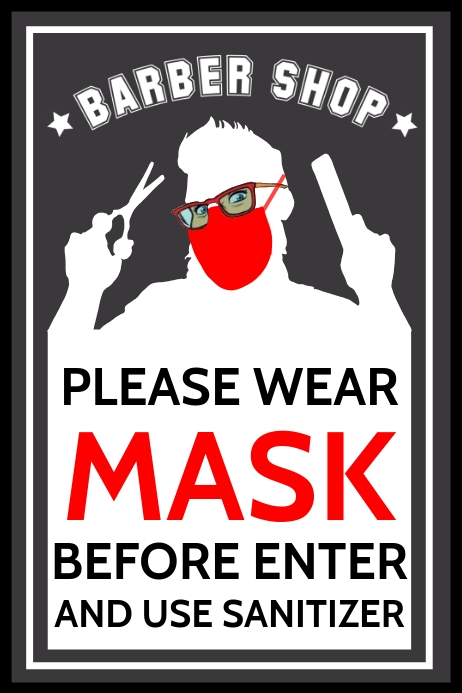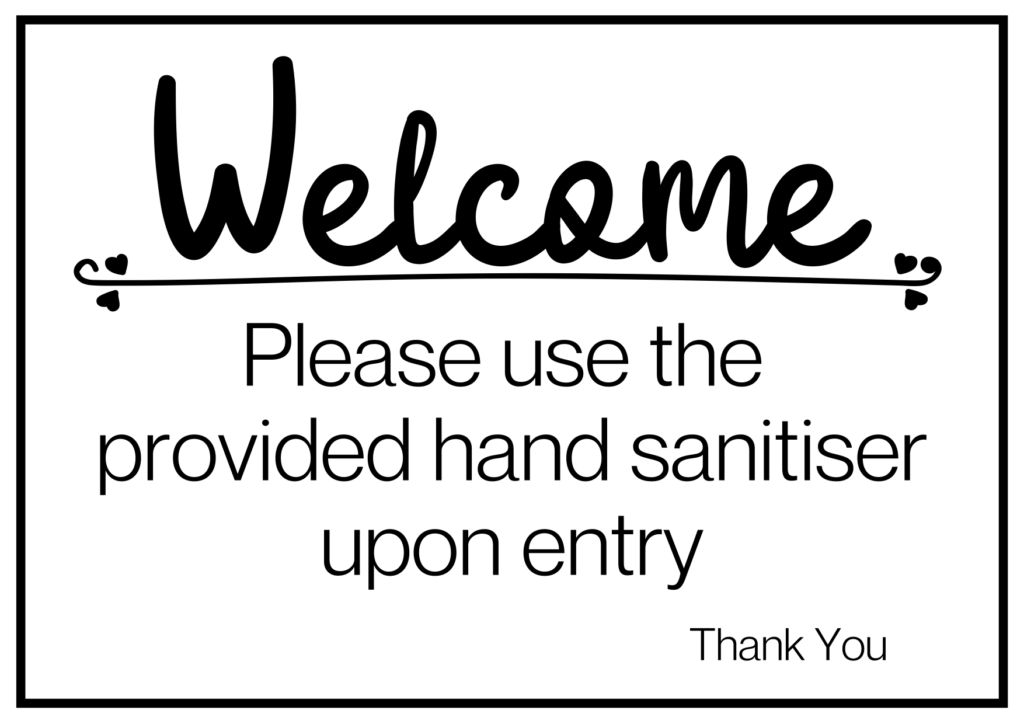Guide: How to Reopen a Hair Salon Safely

Getting a fresh haircut is truly a luxury these days. After months of haphazard quarantine haircuts, people in some parts of the U.S. were finally allowed to go back to their salon or barbershop. Although this is a victory for some, going back to somewhat normal routines warrants a lot of responsibility from salon owners. To reopen a hair salon or barbershop, salon owners need to agile, proactive, and flexible while navigating this tricky landscape.
Even though COVID-19 regulations seem to be loosening in some areas, the situation could turn worse overnight. Throughout July, much of the country began plans to reopen, but by August, those plans quickly started reversing. In the first week of September, 49 states had some form of personal care facilities open, with 23 states either reversing or pausing reopening plans. To reopen a hair salon, business owners need to have not only staff safety in mind, but also customer safety and overall public health.
Reopening a hair salon is not an easy feat, since hair salons offer a very high-contact service. Touching a client’s hair and being in close proximity to them for hours at a time facilitates the spread of disease very easily. When a staff member is exposed, the next thing you know—they are quickly spreading the virus to other customers and employees. This is why it has been extremely difficult to reopen a hair salon in certain areas, but luckily there are many things salon owners can do to lower the risks.
Precautions for Hair Salons During COVID-19
All hair salons and barbershops need to establish some rules for both staff and patrons: limiting the amount of traffic in the salon, rearranging stations to limit proximity to others, and enacting general health & safety protocols.
Enforce health safeguards for both staff and patrons
- Enforce mask use for clients at all times.
- Purchase an infrared thermometer for testing temperatures of customers and staff.
- Protect with Personal Protective Equipment (PPE)
- Hair salon employees would likely fall in the medium exposure risk category designated by OSHA since they have frequent and close contact with (within 6 feet) customers.
- Hairstylists may need to wear some combination of gloves, a gown or smock, a face covering, and/or a face shield or goggles.
- Disposable gloves should be changed between each client.
- Employees should wash their hands with soap and water or use hand sanitizer containing at least 60% alcohol after removing their gloves.
- Provide enough clean smocks for employees to put a new one on between each client.
- Hair salon employees would likely fall in the medium exposure risk category designated by OSHA since they have frequent and close contact with (within 6 feet) customers.
Rotate or stagger shifts to limit the number of employees in the salon at the same time.
To determine your salon’s maximum occupancy, the U.S. Fire Administration recommends to “simply calculate the area of a circle with a radius of 6 feet, which is equal to approximately 113 square feet per person.” Then, use this as a basic guide in accordance with your salon’s square footage, design, and layout.
Rearrange & adapt spaces (both break areas and salon space)
- Arrange all stylists’ stations to be at least 6 feet apart.
- Protect staff by rearranging the break room to comply with social distancing.
- Provide physical guides, such as stickers or tape on floors or sidewalks and signage, to show the flow of traffic within the salon. This will lessen the number of times people cross paths, whether it be customers finding their seats or employees moving about the salon.
- Enforce an “appointments only” system to strategically limit people in the salon. Encourage patrons to wait in their cars until it’s time for their appointment.
- Utilize outdoor spaces. If possible, move services such as simple hair cuts to an outdoor area.
- Ensure that ventilation systems operate properly and increase the circulation of outdoor air, for example, through opening windows and doors.
- Discontinue the use of self-serve beverage stations.
Limit the spread of germs
- Avoid sharing items among clients, such as combs, brushes, and clips, without thoroughly disinfecting first.
- Install no-touch trash cans and doors.
- Limit the use of blow dryers, as they can very easily carry germs from one area to other areas in the salon.
- Do not use fingers to remove hair products from containers. Instead, use disposable spatulas or applicators.
- Place hand sanitizer dispensers at the entrance of the salon and at individual stations, and have both employee and customer wash hands thoroughly or sanitize before and after the service.
- Use contactless payment as much as possible. Cash and even credit cards can be very conducive to the spreading of germs and disease.
- According to a 2017 study conducted in New York City, researchers found microorganisms living on the surface of cash, ranging from mouth and vaginal bacteria to flu-like viruses. eTip can help eliminate this problem by allowing customers to tip your employees through QR codes.
- Prohibit clients to touch any product displays.
Tips for keeping your restaurant clean & sanitized
On top of reducing social contact between people, to reopen a hair salon it is essential to public health to maintain hygienic practices. The following are cleaning tips that the Center for Disease Control (CDC) and the Connecticut Department of Health shared:
- To disinfect non-electrical hair tools (like brushes), use an EPA-registered disinfectant in compliance with the manufacturer’s instructions.
- Label the disinfectant solution with the name, and dispose of it at the end of the day or after any visible debris is present.
- Fully submerge all surfaces of the tool, including handles, into the disinfectant in a covered container for the full contact time listed in the manufacturer’s directions. After disinfecting, the items must be rinsed and dried.
- Razors, scissors, and hair sheers need to have all hair removed from them and then be wiped down and sprayed by an EPA disinfection product.
- To disinfect electrical tools like clippers or styling tools, first, remove any detachable parts and then clean off all visible debris, product, and hair.
- Disinfect the item’s surfaces (including body, handle, and cord) and removable parts with an EPA-registered, hospital-level disinfectant spray or wipe.
- Clipper blades that are not detachable must have the hair removed using a disinfected brush or a blade wash, and the clipper blade must be disinfected with a hospital-level disinfectant spray.
- Clean commonly shared surfaces between each use like payment terminals, countertops, stylist chairs, and shampoo bowls.
- Clean commonly used items like shampoo bottles, product containers, work trays, and rolling carts daily.
- Clean these areas every hour: doorknobs, toilets, tables, light switches, phones, faucets, sinks, keyboards, etc.
- For cleaning products, use ones that are appropriate for each surface and meet EPA & CDC disinfection guidelines. Make sure the disinfectant remains on the surface for the recommended amount of time by the manufacturer.
- Create a disinfection routine that incorporates the above steps and train staff on proper cleaning procedures.
- Make sure that cleaning product residues are not left on surfaces, since they could cause allergic reactions.
- When handling trash, use gloves at all times. Wash hands thoroughly after removing gloves.
- Linen items (like cloths and aprons) should be laundered after each use and dried on the highest heat setting.
- Store tools, towels, and equipment that is not in use in cabinets or air-tight containers.
Educating your hair salon staff about reopening
To operate in the current environment and reopen a hair salon, it is quintessential that salon staff is on the same page. If a salon employee contracts COVID-19 and continues to come to work, they are endangering their fellow employees, the salon’s patrons, and the business’ image. Knowing this, it is crucial to lower the risks as much as possible for employees and customers, as well as enacting strict rules for employees coming to work. You may want to have employees complete a checklist before each shift that includes the following topics:
- Enforce that all employees who are returning to work after travelling get tested for COVID-19 first.
- Conduct daily health checks (e.g., temperature screening and/or or symptom checking) of staff safely and respectfully.
- Designate a staff person for each shift to be responsible for responding to COVID-19 concerns. All staff members need to know who this person is and how to contact them.
- Encourage staff to report if anyone close to them (friends, family, roommate, etc.) has tested positive for COVID-19, and set a prerequisite that they must get tested before coming back to work.
Educating your hair salon clients about reopening
- Utilize signage to educate customers of ways to reduce risk
- “Do not enter if you have shown the following symptoms…”
- “Masks are required to enter this establishment”
- Show rules of the business publicly: (and be sure to post any changes to avoid mishaps)
- Spread awareness of your salon’s rules through:
- Social media
- Website
- Signage
- Spread awareness of your salon’s rules through:

Source: Vistaprint

Source: Poster My Wall

Source: Get Neko
Conclusion
During these unprecedented times, the right answers might not always be clear for high-contact businesses like hair salons. Because of the ever-changing environment, hair salon owners and staff need to be flexible in their accommodations, agile in responding to new developments with COVID-19, and proactive in planning for the future. If salon owners follow these guidelines and stay prepared and alert, hair salons will be a safer and more enjoyable atmosphere for staff and patrons alike.
Join the eTip community!
We'll send the latest content & special releases directly to your inbox.
Ready to join the community?
Receive the latest & greatest content from eTip, sent directly to your preferred inbox!